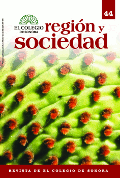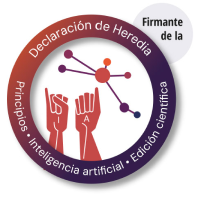 |
 |
 |
 |
 |
 |
 |
 |
 |
 |
 |
 |
Abstract
This paper investigates the backward linkages structure in Baja California's economy using a set of tools for identifying the key sectors in an open and close input-output model (IOM) . In particular, the study focuses on analyzing the relationship between sustaining local suppliers and "promoting" the export maquiladora industry (EMI) , as well as the relationship between regional economic growth and backward linkages.
References
BANCOMEXT. 1988. Indicadores de la industria maquiladora. México: BANCOMEXT.
Banco de México. Estadísticas del Banco de México. Indicadores de la industria maquiladora de exportación. Varios años.
Berlanga–Albretch, L. 1999. Nuevas formas de interrelación entre tecnología y competitividad: con un caso aplicado a las empresas trasnacionales japonesas instaladas en Tijuana. Tesis de maestría en Economía, COLEF.
Brannon, J., D. James y W. Lucker. 1990a. Backward Linkages (or lack there of) from Maquiladoras to Mexican Local Suppliers. El Paso: The University of Texas, Southwest Economics Association.
––––––––––. 1990b. Generating and Sustaining Backward Linkages between Maquiladoras and Local Suppliers in Northern Mexico. World Development 22 (12):1933–1945.
Canto, R. 2005. Las maquiladoras en Yucatán y el Plan Puebla Panamá. Ponencia presentada en el II Seminario internacional "Desarrollo regional, gobernanza y migración", Campeche.
Cardenete, M. A. y F. Sancho. 2004. Reverse Impact using a Regional Social Accounting Matrix. Environmental and Planning A 36: 937–945.
Carmo, P. y J. Martins. 2004. Leite e Derivados e a Geracao de Emprego, Renda y ICMS no Contexto da Economía Brasileria. Artigios 1–29.
Clements, B. D. 1990. On the Decomposition and Normalization of Interindustry Linkages. Economics Letters 33: 337–340.
Chenery, H. B., y T. Watanabe. 1958. International Comparisons of the Structure of Production. Econometrica 26 (4): 486–521.
Dhawan, S. y K. Saxena. 1992. Structural Linkages and Key Sectors of the Indian Economy. Indian Economic Review 27 (2): 195–210.
Fuentes, N. A., S. Lugo y M. Herrera. 2003. La matriz de insumo–producto de Baja California: un enfoque híbrido. México: Universidad Autónoma de Baja California y M. A. Porrúa Editores.
Guilhoto, J., M. Sonis y G. Hewings. 1996. Linkages and Multipliers in a Regional Framework: Integration of Alternative Approaches. Regional Economics Applications Laboratory (Real). Disccusion paper.
Hazari, B. R. 1970. Empirical Identification of Key Sectors in the Indian Economy. Review of Economics and Statistics 52 (3): 301–305.
Hirschman, A. O. 1958. The Strategy of Economic Development. New Haven: Yale University Press.
hUllachain, B. 1984. Input–output Linkages and Foreign Direct Investment in Ireland. International Regional Science Review 9 (3): 185–200.
INEGI. Banco de Información Económica. Varios años.
––––––––––. 2003. Matriz nacional insumo–poducto 2003. http://www.inegi.gob.mx/inegi/default.aspx?.
Jones, L. P. 1976. The Measurement of Hirschmanian Linkages. The Quarterly Journal of Economics 90 (2): 323–333.
Laumas, P. S. 1976. The Weighting Problem in Testing the Linkage Hypothesis. The Quarterly Journal of Economics 90 (2): 308–312.
Martínez Pellegrini, S. 1994. El desarrollo del potencial endógeno: sus modelos y el caso de Valencia. Tesina de doctorado, Universidad Autónoma de Madrid.
Michie, D. 1989. Backward Linkages in Maquila: Some Further Evidence. El Paso: The University of Texas, North American Economics and Finance Association.
Miyazawa, K. 1976. Input–output Analysis and the Structure of Income Distribution. Berlin: Springer–Verlag.
Ramírez, J. C. y B. González–Aréchiga. 1993. ¿Es real la integración de insumos nacionales a las maquiladoras? La experiencia de Nuevo León. Revista de El Colegio de Sonora I (5): 13–40.
Rasmussen, P. 1956. Studies in Intersectoral Relations. Amsterdam: North–Holland. P. C.
Riedel, J. 1976. A Balanced–growth Version of the Linkage Hypothesis: A Comment. The Quarterly Journal of Economics 90 (2): 319–322.
Sastre, G. M. 2000. Análisis de los sectores económicos de Baja California Sur: un enfoque de sectores clave. Tesis de maestría, COLEF.
Sastry, D., B. Singh, K. Bhattacharya y N. Unnikrishnan. 2003. Sectoral Linkages and Growth Prospects, Reflections on the Indian Economy'. Economic and Political Weekly 38 (24): 2390–2397.
Secretaría de Economía. 2004. Primera edición de la Feria de Insumos. Imperial, California.
Vargas, L. 2001. Importancia y perspectivas de la IME. Ponencia presentada en el foro Red de la economía fronteriza/Border Economy Network, Tijuana.
––––––––––. 1996.The Maquiladora Industry: Still Going Strong. Business Frontier 3: 1–4.
Wilson, P. A. 1991. Maquiladoras and their Transaction Patterns: An Empirical Analysis. Frontera Norte 3 (5): 55–84.
Yotopoulos, P. A., y J.B. Nugent. 1976. In Defense of a Test of the Linkage Hypothesis. The Quarterly Journal of Economics 90 (2): 334–343.
––––––––––. 1973. A Balanced–growth Version of the Linkage Hypothesis: A Test. The Quarterly Journal of Economics LXXXVII (2): 157–171.
Open access policy
The authors who publish in región y sociedad accept the following conditions:
In accordance with the copyright laws, región y sociedad recognizes and respects the authors’ moral rights, as well as the ownership of property rights, which will be transferred to the journal to disseminate the articles in open access. región y sociedad does not charge the authors for submitting and processing articles for publication.
All the texts published by región y sociedad —with no exception— are distributed under a Creative Commons license 4.0 Attribution – Noncommercial (CC BY-NC 4.0 International), which allows third parties to use the publication as long as they mention the works’ authorship and the first publication in this journal.
The authors can enter into independent and additional contractual agreements for the nonexclusive distribution of the version of the article published in región y sociedad (for instance include it into an institutional repository or publish it in a book) as long as they clearly indicate that the work was published for the first time in región y sociedad.
For all the above, the author(s) must send the Letter of transfer of property rights of the first publication duly filled in and signed by the author(s). This letter can be sent by e-mail as a PDF to: region@colson.edu.mx






